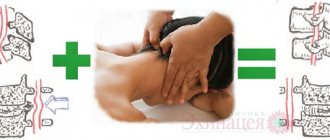Make an appointment by phone: +7 (343) 355-56-57
+7
- About the disease
- Cost of services
- Sign up
- About the disease
- Prices
- Sign up
Intracranial hypertension (ICH)
is a syndrome of increased intracranial pressure due to various causes. The condition can be life-threatening, so full diagnosis and treatment in the neurological department of the hospital is necessary.
Reasons for development
Due to the strength of the skull bones, any formation or fluid increases intracranial pressure.
The most common causes are the appearance of space-occupying lesions in the brain (tumor, abscess or hematoma). The condition threatens a person’s life, since the respiratory or vascular centers may be damaged as a result of compression. This will be fatal. Ischemia of cerebral vessels can cause a stroke.
An increase in brain volume due to tissue swelling or impaired fluid outflow also causes an increase in pressure. Insufficient oxygen supply to cells and their death due to hypoxia in various diseases is a possible cause of the development of ICH.
Changes in hormonal status, taking medications, especially antibiotics and hormones, and severe kidney disease can cause the development of ICH. It may result from complications after surgery or infections.
Intoxication of the body with heavy metals or traumatic brain injuries can also lead to the occurrence of this pathology.
Increased intracranial pressure: how to recognize and reduce?
Increased intracranial pressure - what does this concept really mean? How does intracranial pressure relate to arterial pressure?
We looked for answers to these and other questions with Yulia Vladimirovna Roshchupkina, a neurologist at the Expert Tula Clinic.
— Yulia Vladimirovna, what is intracranial pressure? What should it be normally and when it comes to increasing it?
This is a parameter that reflects the strength of the influence of cerebrospinal fluid (CSF) on brain tissue. The cerebrospinal fluid is under a certain pressure, which is called intracranial. Today it is measured in millimeters of mercury (mmHg) and is normally between 10 and 15 mmHg.
INTRACRANIAL PRESSURE IS MEASURED IN MILLIMETERS OF MERCURY (MM.Hg) AND IS NORMALLY FROM 10 TO 15 MM. RT. ST.
The danger is represented by pressure above 25 mmHg.
When it approaches 35 mmHg. it is designated as critical, loss of consciousness and death of brain cells are possible.
— Is increased intracranial pressure a diagnosis or a symptom?
This is a syndrome. Its synonym is intracranial hypertension. It occurs with a number of pathologies, as well as tilting the head, sneezing, physical activity, etc.
— By what signs can you understand that a person has increased intracranial pressure?
Symptoms of intracranial hypertension include a pressing, bursting headache, mainly in the morning. May be in different parts of the head.
Read the material on the topic: What to do if the head is “cast iron”?
Nausea and vomiting are also noted; drowsiness; disorders of memory, attention, thinking; autonomic disorders (fluctuations in blood pressure, decreased heart rate, increased sweating); blurred vision and blindness.
— What happens with increased intracranial pressure - do the vessels narrow or, on the contrary, expand?
Its increase is caused by dilation of the arteries leading to the brain, which is accompanied by an increase in blood flow to it, as well as a decrease in outflow through the veins. As a result, blood vessels overflow, and the surrounding tissue is saturated with blood plasma.
SYMPTOMS OF INTRACRANIAL HYPERTENSION INCLUDE PRESSING, BURNING PAIN, MAINLY IN THE MORNING. MAY BE IN DIFFERENT PARTS OF THE HEAD
In addition, this is also possible when a space-occupying formation or process develops in the cranial cavity.
— Increased intracranial pressure occurs only with high blood pressure or can it also occur with hypotension?
It is also possible with hypotension (one example is brain injury with concomitant significant blood loss).
Read the material on the topic: When there is nowhere lower. What are the reasons for hypotension?
On the question of the relationship between increased arterial and intracranial pressure: if the regulatory mechanisms work normally, then arterial hypertension does not necessarily lead to intracranial hypertension.
— What is the danger of high intracranial pressure?
As it increases, daily morning vomiting is possible against the background of intense headache. Mental functions are depressed. Lethargy appears, there may be disturbances of consciousness, even coma.
Blood pressure rises, breathing becomes depressed and becomes less frequent, and the pulse slows down. Generalized seizures may occur. In advanced cases, displacement and infringement of brain structures is possible, disrupting the functioning of vital centers of respiration and circulation, which leads to death.
— Tell us what leads to the occurrence of intracranial hypertension.
These are infections of the brain and its membranes; traumatic brain injury; neoplasms of various nature in the cranial cavity; hematomas, brain abscesses; prolonged lack of oxygen; difficulty in outflow through the jugular veins; dropsy of the brain; overweight, obesity, metabolic pathology; chemical poisoning.
Read the material on the topic: Will an MRI show meningitis?
— Are the reasons why intracranial pressure increases in children and adults the same or different?
In some ways they are similar. At the same time, in children, in particular, prolonged intrauterine oxygen deficiency, neuroinfections, and other pathologies of pregnancy and childbirth can lead to its increase.
— How is the cause of increased intracranial pressure diagnosed?
Mostly MRI and CT, ultrasound of the brain, echoencephaloscopy, and fundus examination are performed.
Read the material on the topic: What will the fundus tell you?
Intracranial pressure is measured using a pressure gauge. In this case, a special catheter is inserted into the spinal canal or into the ventricles of the brain.
You can sign up for a brain MRI in your city here
— Yulia Vladimirovna, does the condition of intracranial hypertension require mandatory treatment or can increased intracranial pressure go away on its own?
It depends on its cause. The solution to this issue is within the competence of the attending physician; self-medication is unacceptable. If any of the above complaints occur, contact your doctor for timely treatment.
— Are traditional methods used to reduce increased intracranial pressure? How effective are they?
And here everything depends on the cause and mechanism of development of this pathology. Folk remedies are not able to eliminate the cause; they are never used as primary means. However, theoretically, in some cases they can slightly alleviate the patient’s condition. In any case, the decision about the possibility of taking this or that drug is made by the doctor.
— What specialty should you consult with a doctor if you suspect intracranial hypertension?
To a neurologist. After clarifying the cause, consultation and, if necessary, treatment by a neurosurgeon may be necessary.
You can make an appointment with a neurologist in your city here
Attention: the service is not available in all cities
You may also find useful:
It's off scale! Looking for reasons for high blood pressure
What is hidden behind the diagnosis of migraine?
Vegetative-vascular dystonia: diagnosis or fiction?
For reference:
Roshchupkina Yulia Vladimirovna
In 2001 she graduated from the Faculty of Medicine of Kursk State Medical University.
From 2001 to 2002 she completed an internship in the specialty “Neurology”.
She specializes in acupuncture.
Currently he holds the position of neurologist at Clinic Expert Tula. Receives at the address: st. Boldina, 74.
Symptoms
Cephalgic syndrome: patients are bothered by a constant headache without clear localization, especially in the morning.
There may be dizziness, nausea, or vomiting. Often there is depression of consciousness up to coma. Ophthalmological syndrome: upon examination, the doctor discovers congestive changes in the fundus with hemorrhages. Papilledema is noted. Patients note loss of visual fields or the appearance of dark circles.
Focal symptoms include bilateral damage to the abducens nerves. Clinically, this is manifested by convergent strabismus. The progression of this condition is dangerous due to displacement of brain structures and herniation of the brainstem. This will cause breathing and heartbeat to stop.
Intracranial hypertension in children
There are two types of pathology in children:
- The syndrome slowly increases in the first months of life, when the fontanelles are not closed.
- The disease develops rapidly in children after a year, when the sutures and fontanelles have closed.
In children under one year of age, due to open cranial sutures and fontanelles, symptoms are usually mild. Compensation occurs due to the opening of the sutures and fontanelles and an increase in the volume of the head.
The first type of pathology is characterized by the following symptoms:
- vomiting occurs several times a day;
- the baby sleeps little;
- cranial sutures diverge;
- the child cries often and for a long time without reason;
- the fontanelles swell, the pulsation in them cannot be heard;
- veins are clearly visible under the skin;
- children are developmentally delayed and later begin to hold their head up and sit;
- the skull is large for its age;
- the bones of the skull are formed disproportionately, the forehead protrudes unnaturally;
- When the child looks down, a white stripe of the white of the eyeball is visible between the iris and the upper eyelid.
Each of these signs individually does not indicate increased pressure inside the skull, but the presence of at least two of them is a reason to examine the child.
When the fontanelles and cranial sutures close, the manifestations of intracranial hypertension become pronounced. At this time, the child develops the following symptoms:
- constant vomiting;
- anxiety;
- convulsions;
- loss of consciousness.
In this case, you must definitely call an ambulance.
The syndrome can also develop at an older age. In children over two years of age, the disease manifests itself as follows:
- the functions of the sense organs are impaired due to the accumulation of cerebrospinal fluid;
- vomiting occurs;
- in the morning when waking up, bursting headaches appear that put pressure on the eyes;
- when rising, the pain weakens or recedes due to the outflow of cerebrospinal fluid;
- the child is stunted and overweight.
Increased ICP in children leads to disturbances in brain development, so it is important to detect the pathology as early as possible.
Diagnostics
To begin with, a neurologist collects complaints and conducts an examination.
Based on its results, indications for instrumental diagnostic methods are determined. With their help, you can clearly see the cause of your symptoms and make a diagnosis. The diagnostic standard is a CT or MRI of the brain. This method allows you to see tumors, hematomas and other formations inside the skull that can cause ICH. You can also evaluate the condition of the optic nerves and ventricles of the brain. An ophthalmologist must examine such patients to identify changes in the fundus.
Read also
Perinatal encephalopathy
Perinatal encephalopathy is a frequently encountered concept in the practice of pediatricians and pediatric neurologists!
What it is? Literally, “perinatal encephalopathy” means “damage to the brain in the perinatal… Read more
Aphasia
Aphasias are speech defects that appear with minor brain damage, most often affecting the left hemisphere in right-handed people, and consisting of various forms of speech changes. Location and size...
More details
Myasthenia gravis
MYASTHENIAS – a disease associated with a disruption of the immune system, as a result of which antibodies are produced against the body’s own tissues involved in the transmission of nerve impulses, which...
More details
Neurogenic bladder
In a healthy person, the process of urination is carried out in the form of a voluntary reflex act, and we can control it. However, this is not the case with this disease. Patients are extremely...
More details
Ankylosing spondylitis/ankylosing spondylitis
Ankylosing spondylitis (ankylosing spondylitis) is a chronic inflammatory disease of the spine and joints, accompanied by progressive pain, stiffness and limited movement at the beginning...
More details
Treatment of intracranial hypertension
What is the treatment for increased intracranial pressure in adults? If it is benign hypertension, the neurologist prescribes diuretics. As a rule, this alone is enough to alleviate the patient’s condition. However, this traditional treatment is not always acceptable to the patient and cannot always be performed by him. You can’t “sit” on diuretics during working hours. Therefore, special exercises can be performed to reduce intracranial pressure.
A special drinking regime, a gentle diet, manual therapy, physiotherapeutic procedures and acupuncture also help very well with intracranial hypertension. In some cases, the patient manages even without drug treatment. Signs of the disease may disappear within the first week from the start of treatment.
A slightly different treatment is used for cranial hypertension caused by some other disease. But before treating the consequences of these diseases, it is necessary to eliminate their cause. For example, if a person has developed a tumor that creates pressure in the skull, the patient must first get rid of this tumor, and then deal with the consequences of its development. If it is meningitis, then there is no point in treating with diuretics without simultaneously combating the inflammatory process.
In very severe cases (for example, cerebrospinal fluid block after neurosurgical operations or congenital cerebrospinal fluid block), surgical treatment is used. For example, a technology has been developed to implant tubes (shunts) to drain excess cerebrospinal fluid.
PS: A decrease in intracranial pressure (hypotension) is caused by dehydration (vomiting, diarrhea, large blood losses), chronic stress, vegetative-vascular dystonia, depression, neurosis, diseases accompanied by circulatory disorders in the vessels of the brain (for example, ischemia, encephalopathy, cervical osteochondrosis ).
Complications
The brain is a vulnerable organ. Prolonged compression leads to atrophy of the nervous tissue, which means that mental development and the ability to move suffer, and autonomic disorders occur.
If you do not contact a specialist in time, compression will occur. The brain may be forced into the foramen magnum or into the notch of the tentorium cerebellum. This compresses the medulla oblongata, where the centers of respiration and circulation are located. This will lead to the death of a person. Pressing into the notch of the tentorium is accompanied by constant drowsiness, yawning, breathing becomes deep and rapid, the pupils are noticeably constricted. Wedging of the hippocampal hook occurs, a symptom of which is dilation of the pupil or the absence of a light reaction on the side of the damage. An increase in pressure will lead to dilation of the second pupil, disruption of the breathing rhythm and coma.
High intracranial pressure is always accompanied by loss of vision due to compression of the optic nerve.










